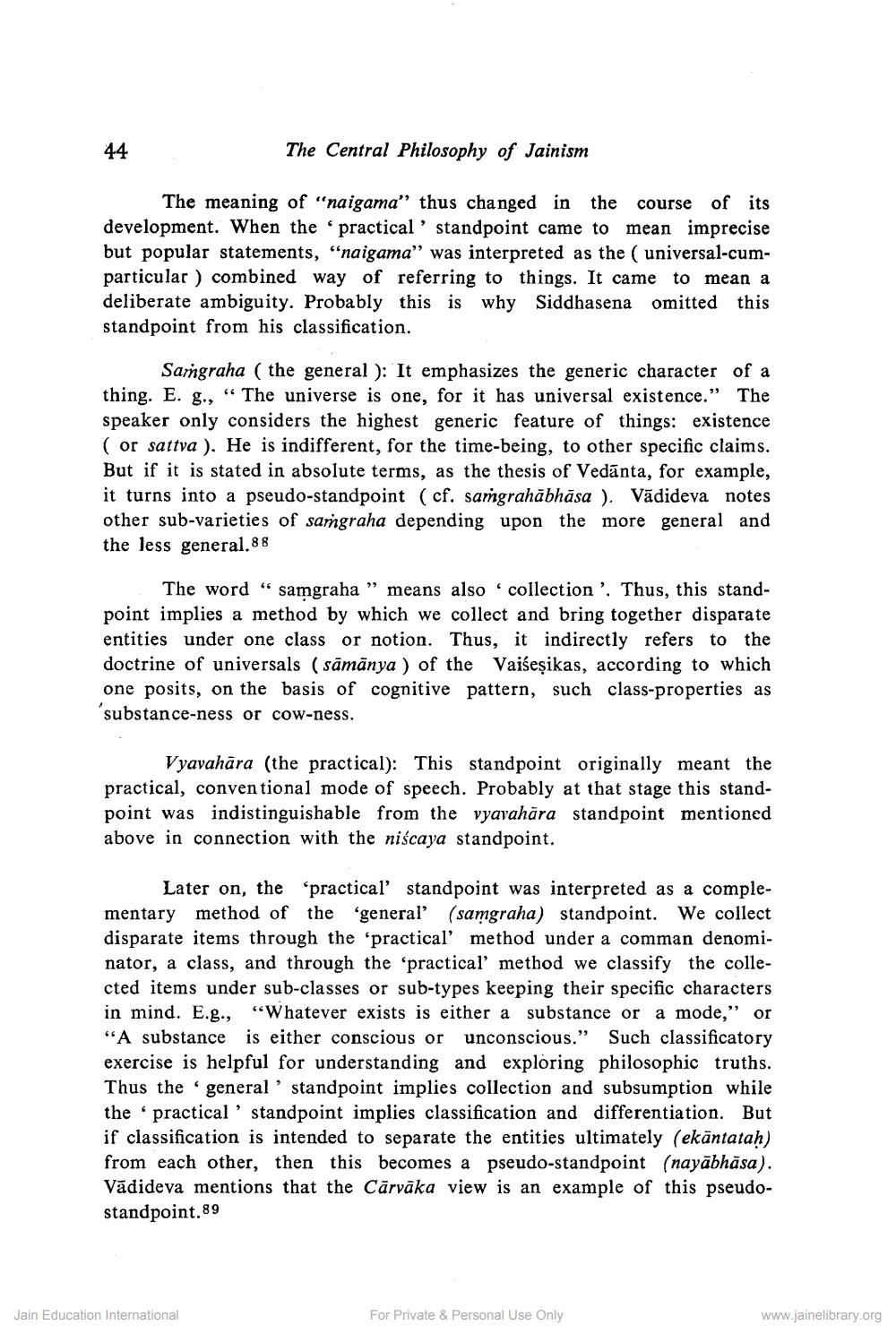________________
44
The Central Philosophy of Jainism
The meaning of "naigama" thus changed in the course of its development. When the practical' standpoint came to mean imprecise but popular statements, "naigama" was interpreted as the universal-cumparticular ) combined way of referring to things. It came to mean a deliberate ambiguity. Probably this is why Siddhasena omitted this standpoint from his classification.
Sarngraha ( the general ): It emphasizes the generic character of a thing. E. g., “ The universe is one, for it has universal existence." The speaker only considers the highest generic feature of things: existence ( or sattva ). He is indifferent, for the time being, to other specific claims. But if it is stated in absolute terms, as the thesis of Vedānta, for example, it turns into a pseudo-standpoint (cf. sangrahābhāsa ). Vādideva notes other sub-varieties of sargraha depending upon the more general and the less general. 88
The word “samgraha” means also collection'. Thus, this standpoint implies a method by which we collect and bring together disparate entities under one class or notion. Thus, it indirectly refers to the doctrine of universals (sāmānya ) of the Vaišeşikas, according to which one posits, on the basis of cognitive pattern, such class-properties as 'substance-ness or cow-ness.
Vyavahāra (the practical): This standpoint originally meant the practical, conventional mode of speech. Probably at that stage this standpoint was indistinguishable from the vyavahāra standpoint mentioned above in connection with the niscaya standpoint.
Later on, the practical' standpoint was interpreted as a complementary method of the 'general' (samgraha) standpoint. We collect disparate items through the 'practical' method under a comman denominator, a class, and through the 'practical method we classify the collected items under sub-classes or sub-types keeping their specific characters in mind. E.g., “Whatever exists is either a substance or a mode," or "A substance is either conscious or unconscious." Such classificatory exercise is helpful for understanding and exploring philosophic truths. Thus the 'general' standpoint implies collection and subsumption while the practical' standpoint implies classification and differentiation. But if classification is intended to separate the entities ultimately (ekāntatah) from each other, then this becomes a pseudo-standpoint (nayābhāsa). Vādideva mentions that the Cārvāka view is an example of this pseudostandpoint. 89
Jain Education International
For Private & Personal Use Only
www.jainelibrary.org




